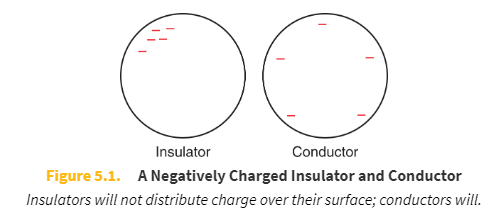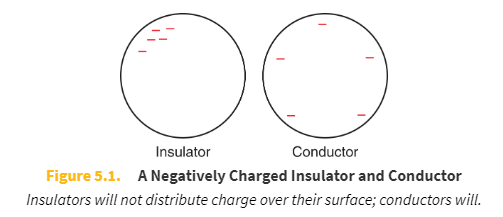Electrostatics
Electrostatics is the study of stationary charges and the forces that are created by and which act upon these charges.
Proton
A proton is a stable subatomic particle with a positive one elementary electric charge.
Electron
The electron is a subatomic particle with a negative one elementary electric charge.
Opposite charges exert _____ forces, and like charges exert _____ forces.
attractive
repulsive
Unlike the force of gravity, which is _____, the electrostatic force may be _____ or _____ depending on the signs of the charges that are interacting.
always an attractive force
repulsive or attractive
While many of the particles we discuss in electrostatics are very, very tiny, do not forget that they still do _____.
have mass
Most matter is electrically _____, as a balance of positive and negative charges ensures a _____.
neutral
relative degree of stability
Ground
A means of returning charge to the earth
Static charge buildup or static electricity
Static electricity is an imbalance of electric charges within or on the surface of a material or between materials.
Static charge buildup or static electricity is more significant in drier air because ...
...lower humidity makes it easier for charge to become and remain separated.
The SI unit of charge is the _____
coulomb (C)
Fundamental unit of charge (in coulombs)
e = 1.60 × 10−19 C
A proton and an electron each have one _____, although the proton is _____, while the electron is _____.
fundamental unit of charge
positively charged (q = +e)
negatively charged (q = −e)
Even though the proton and the electron share the same magnitude of charge, they do not share the same _____; the proton has a _____ than the electron.
mass
much greater mass
Law of conservation of charge
Charge can neither be created nor destroyed.
Insulator

An insulator will not easily distribute a charge over its surface and will not transfer that charge to another neutral object very well—especially not to another insulator.
On a molecular level, the electrons of insulators tend to be _____. By extension, most _____ are insulators.
closely linked with their respective nuclei
nonmetals
Experimentally, insulators serve as _____ in capacitors, as well as in _____ to prevent grounding.
dielectric materials
isolating electrostatic experiments from the environment
Conductor behavior

When a conductor is given a charge, the charges will distribute approximately evenly upon the surface of the conductor.
Conductors are able to _____ and are often used in circuits or electrochemical cells.
transfer and transport charges
Conductors are often conceptualized as nuclei surrounded by _____ and are only _____ associated with the positive charges.
a sea of free electrons that are able to move rapidly throughout the material
loosely
Conductors are generally _____, although _____ solutions are also effective conductors.
metals
ionic (electrolyte)
Neutron
The neutron is a subatomic particle which has a neutral (not positive or negative) charge, and a mass slightly greater than that of a proton.